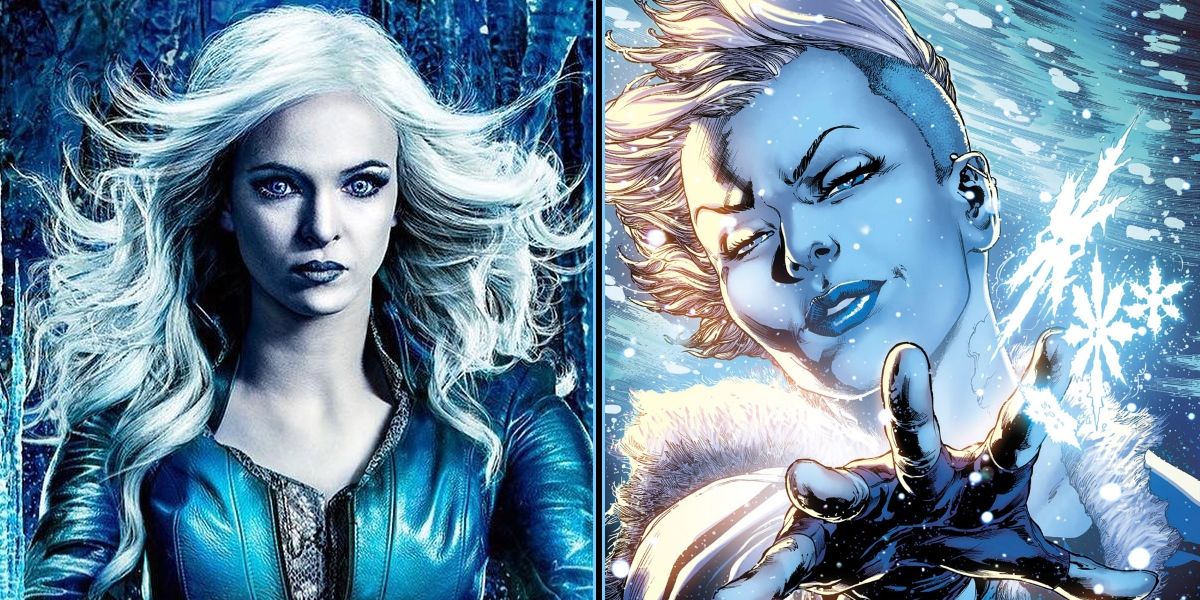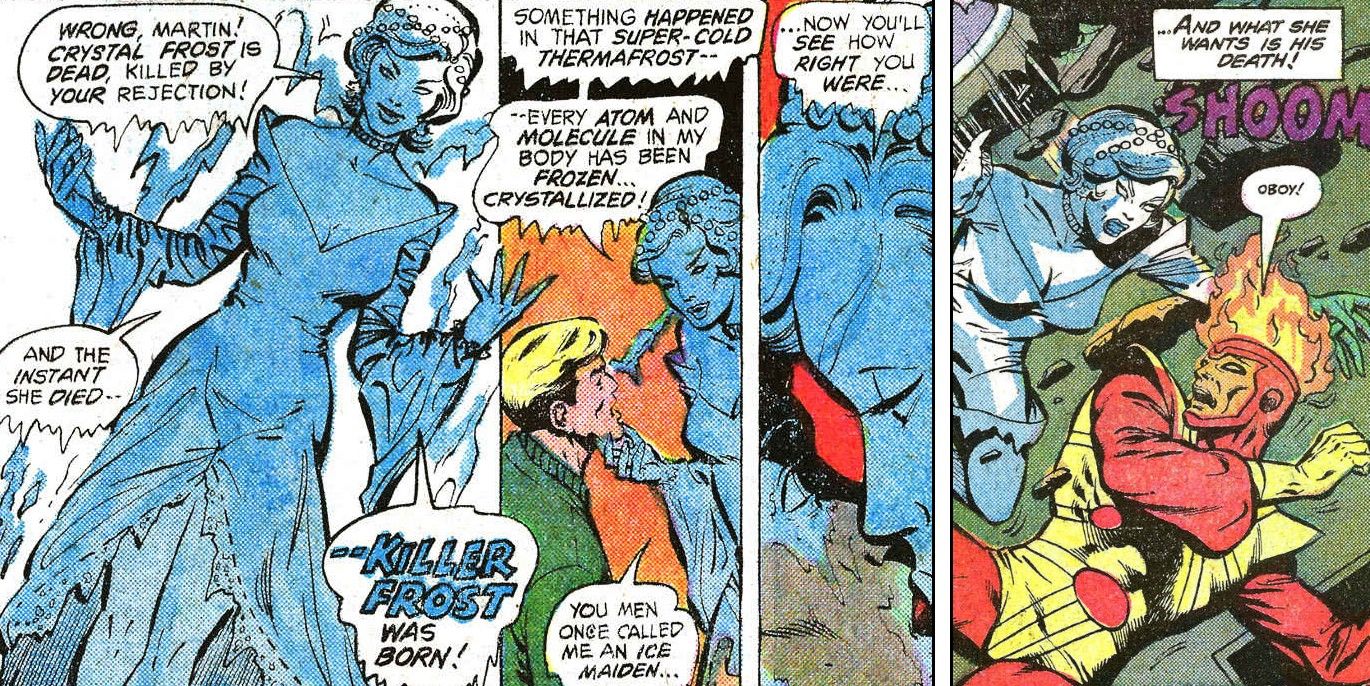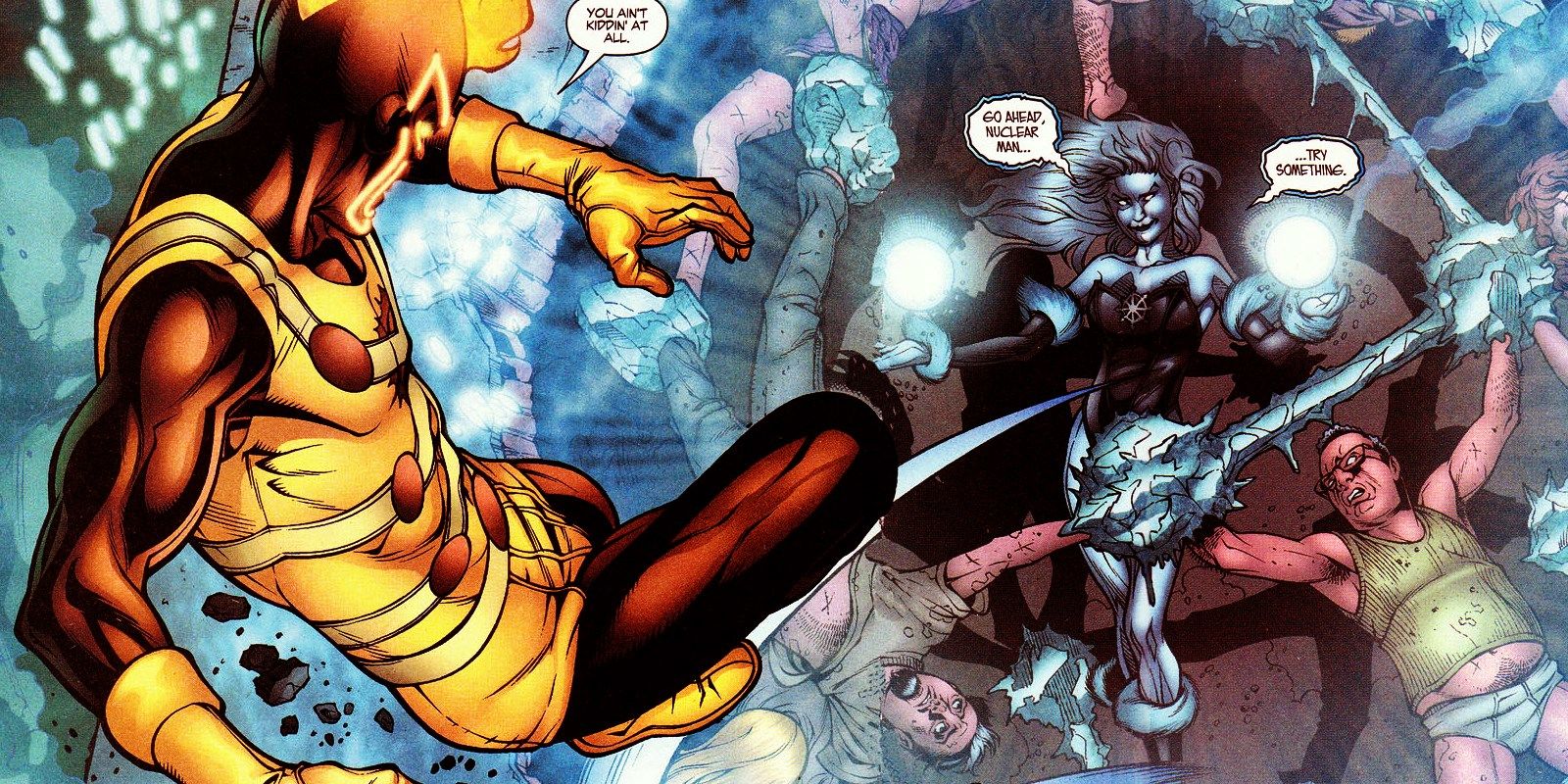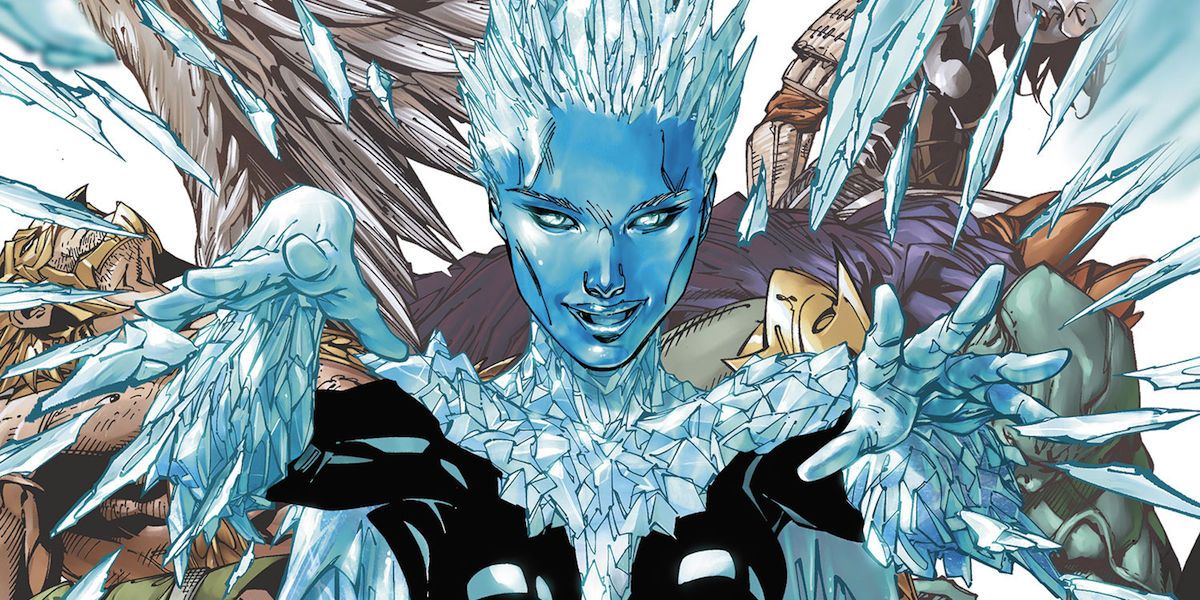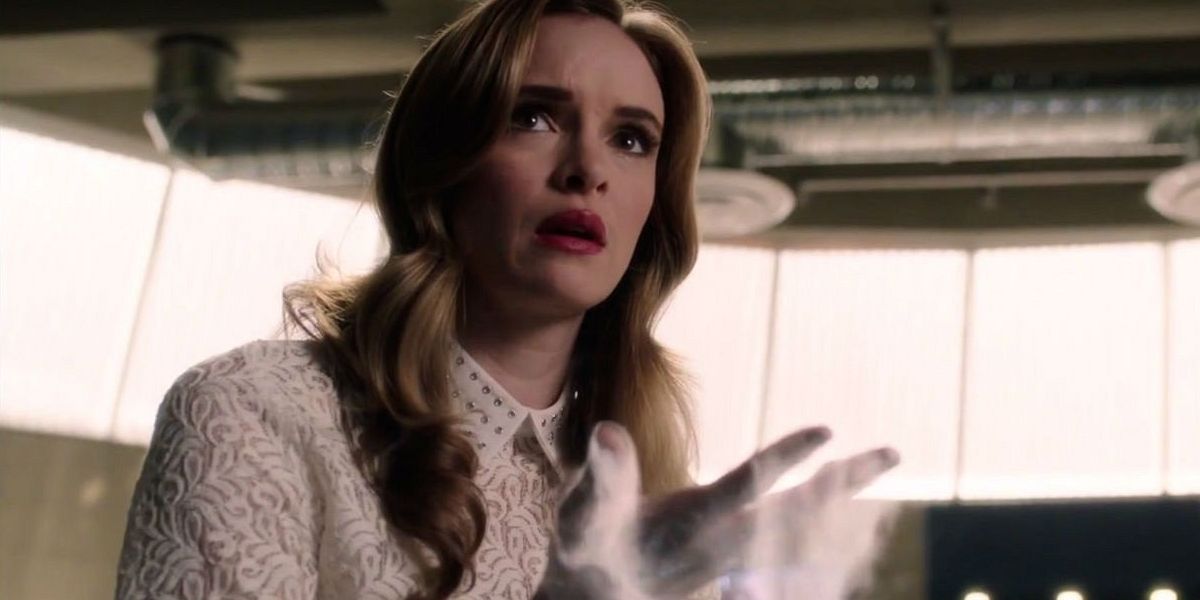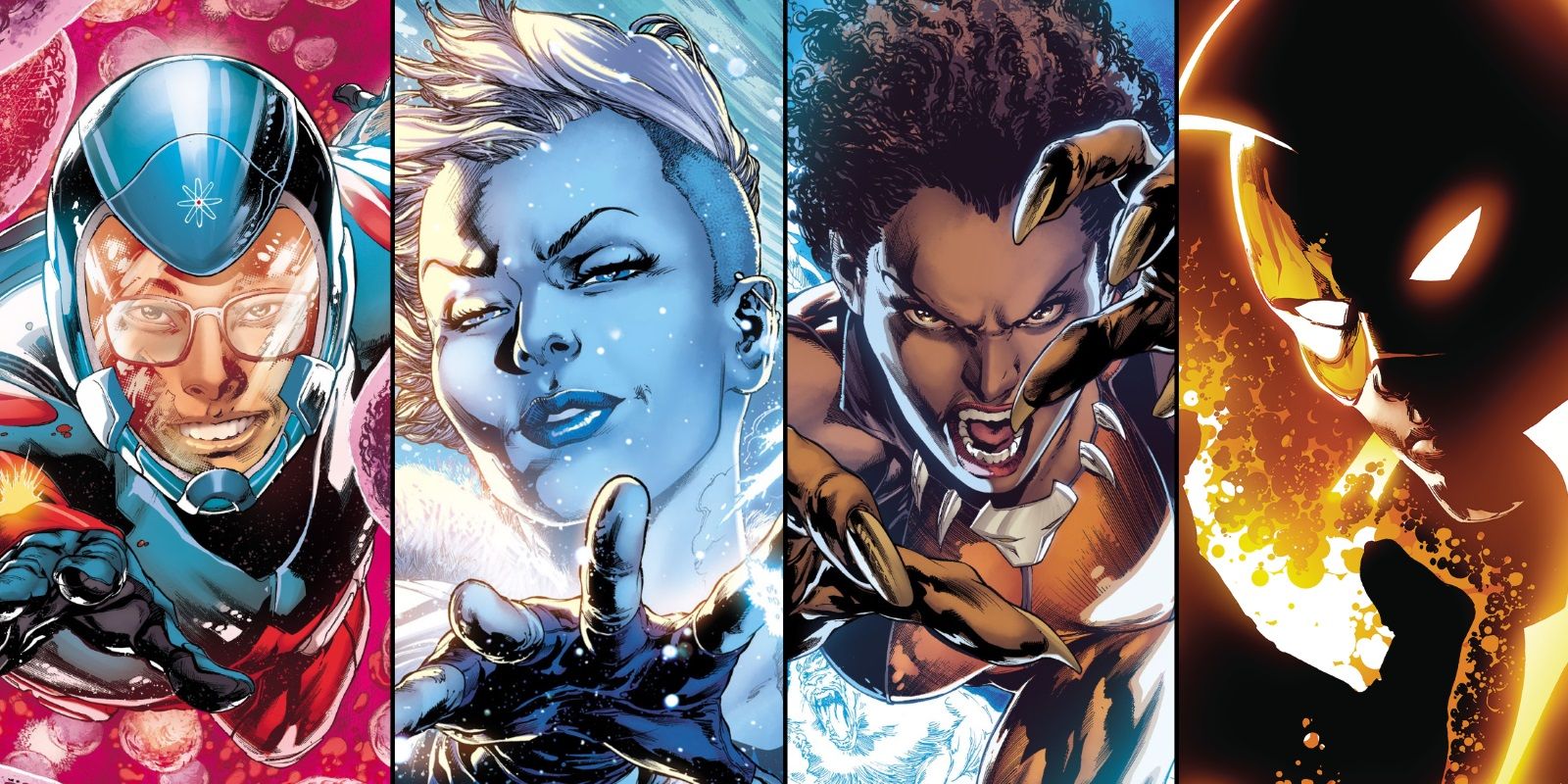Fans of comic book superheroes may daydream about discovering a superpower, and taking to the streets to stop (hopefully) crimes as a costumed hero. But not every superpower is a gift, and those watching The CW's version of The Flash have seen a supporting character on the heroic side of things turn evil - fast. The transformation of Caitlin Snow (Danielle Panabaker) into the ice-powered supervillain 'Killer Frost' didn't begin until the show's third season, but her character's destiny in the comics meant the writing's been on the wall for years.
That isn't to say that the Killer Frost who stalked the pages of DC Comics has been a simple, or even singular villain. A few different versions have held the title over the years, but all sharing some key elements in their origin story (and powers). So fans of the TV version can see just how closely its keeping to the DC Comics source material, we're breaking down the need-to-know facts about Killer Frost across the ages, how The Flash's version differs, and what the future may hold for Caitlin Snow - in the comics and the TV universe.
The Original Killer Frost
Surprisingly, it isn't The Flash whose comic was responsible for the birth of the villain named Frost, but "Firestorm", with the pre-superpower Crystal Frost debuting in just the third issue. It was a time when villain and hero origin stories were best known for their 'wow factor' as opposed to compelling character drama, and Crystal Frost's origin story is one of a kind. A former student of Professor Martin Stein, Dr. Frost invites Stein to the Arctic research project she's working on to harness the power of the Earth's core. What Stein doesn't know is that Frost fell madly in love with him during her school days, and has hatched this plan to finally win his affections for herself.
The much older Stein rebuffs Frost's advances, confused more than cruel, but is nevertheless lumped in with all the other men Dr. Frost feels have given her the cold shoulder. Having given up hope that any man could appreciate her for her mind alone, she accidentally bumps a door closed, sealing herself in a chamber intended to drop the temperature one thousand degrees in a matter of seconds. When discovered, Dr. Frost reveals that her human identity has disappeared - only Killer Frost remains.
Those she doesn't kill with a sub-zero kiss are frozen with blasts of cold launched from her hands, but as silly as it may seem, Firestorm's arrival gets to the real core of her powers. She isn't harmed by heat, but fueled by it, existing to feed off of thermal energy wherever she can find it. By creating a refrigerator around the angry, spurned ice queen, she's frozen to a standstill. She would return years later having thawed from her storage, but her days were numbered, soon to be succeeded by her star pupil...
The Second Frost
Crystal Frost always held Firestorm responsible for her demise, and when she finally succumbed to the warm grip of death after absorbing too much nuclear energy from the hero, her pupil, Louise Lincoln kept the tradition alive. Recreating the same experiment that turned Crystal into a clod-throwing, man-hating villain, Louise emerged as essentially a carbon copy. But over the years, her character took on a more romantic personality. Well, less 'romantic,' and more 'fatally seductive' (think of Poison Ivy, but with ice instead of plants, and you're on the right track).
There's always room for a scantily-clad villain tempting men to their doom in the pages of comic books (or any fiction, really), and Louise's career soared to far more impressive heights than her predecessor. Her years of ice-based cruelty landed her in prison, earned her a spot on Amanda Waller's Suicide Squad, and a handful of other supervillain team-ups given her unique appearance and power set. It was this version of the villain that moved into animated TV shows and features along with the rest of DC's modern roster, including the most recent Batman: Assault on Arkham.
But the ties to Firestorm remained, even turning to the hero for assistance when she was diagnosed with cancer - until Frost became too dangerous, and he reversed the transformation, returning her terminal illness. Ice was truly just one trick in Louise's repertoire, and team-ups with Mr. Freeze or deals with the devil are fair game in her life of crime. Until DC's New 52 came around, and the publisher decided a new take on the villain was needed.
The New 52 Killer Frost
The powers remain the same, but it's here where the similarities to Caitlin Snow start to show - beginning with her name... 'Caitlin Snow.' Like most of the New 52 re-imaginings, the new Killer Frost takes the classic elements of the story and updates them with a bit more character motivation and sympathy. She made her debut, once again, in the pages of Firestorm's title series as part of a gang of villains taking him on in battle. But it wasn't until her standalone "Justice League" issue during the "Forever Evil" event that Caitlin Snow's new origin story could be told.
Again, A brilliant scientist heading into the frigid Arctic to lead an energy research project, Caitlin Snow was supposed to be filling in for the deceased Dr. Louise Lincoln (having apparently gone mad, and frozen to death outdoors). Shrugging off her lazy crew and studying up on everything Dr. Lincoln had accomplished thus far, Dr. Snow hit paydirt, unlocking the secrets of perpetual motion... just in time for her crew to turn on their leader. You see, they weren't a research team trying to break new ground in theoretical physics, but agents of H.I.V.E. intent on keeping such technology out of the public's hands.
Their attempted execution of Dr. Snow failed, and the combination of an experimental superconductor and coolant dropped her body temperature below freezing, turning her into, essentially, a 'heat vampire.' Needing heat energy to survive, Dr. Snow made quick work of her would-be killers, draining them of all energy as she picked her way back to the mainland.
A heat vampire she remained until battling Firestorm, when a blast of heat from the nuclear superhero didn't just feed her need for heat, but transformed her back into her original form (for a brief second). From then on her mission was only Firestorm, reverse-engineering his powers, tangling in battle, and trying to unlock this new mystery and cure for her condition. Though it stood before her dressed in yellow and red, the solution escaped her. She didn't start as a villain, and a chance to be 'back to normal' is an urge every reader could understand.
The CW's Version
Her transformation was nowhere near as dramatic as her predecessors, but The Flash's version of Caitlin Snow was also imbued with the ability to generate structures of ice, or lower the temperature of living beings or even superheated metals with ease. Unlike the New 52 version, though, this Caitlin doesn't need to feed off of any energy, thermal or otherwise to be able to use her powers - not yet, anyway. For now, the only link between her powers and her physiology is that the more she uses the power, the more it changes her appearance on a cosmetic level (and perhaps on a temperature scale, as well).
It's not often that the comic book explanation for superpowers is actually simpler than the live-action adaptation, but so far, The CW's Killer Frost has gained her powers through unknown means. A reaction to the particle accelerator disaster is the most obvious answer, but with a lack of any temperature-focused substances or devices, Caitlin's powers seem randomly assigned. What's more, it's the powers that are causing a physiological change, and not the other way around. Still, it would seem that months, if not years of using her superpowers would result in a sub-zero metahuman... although the source of her powers may still be a sticking point.
Despite the show's commitment to science fiction, it has yet to be pointed out by anyone that dropping an object's temperature doesn't mean blasting it "with cold," but pulling the energy inside of it out. It's unclear which Caitlin is actually doing when launching a Killer Frost attack, but she's clearly not relying on heat to survive, or exhibiting the crippling pain of her comic book counterpart when the heat of the living isn't absorbed at intervals.
Frankly, it's the apparent shift into a villainous alternate identity that seems to be Caitlin's problem, and that's something new for the supervillain.
Her Justice League Future
There's a good reason to put the supervillain Killer Frost on the minds of casual DC Comics fans, since a new age of the chilly villain is about to begin. Following the DC Rebirth, the publisher is set to launch a brand new "Justice League of America" comic series, intended to reflect the nation as it exists today: diverse, unorthodox, and anything but squeaky clean. Alongside heroes like Ryan Choi a.k.a. The Atom, Mari McCabe a.k.a. Vixen, and Ray Terrill a.k.a. The Ray, the supervillain Caitlin Snow sticks out like a sore thumb.
But according to the official synopsis for her "Justice League of America" one-shot (releasing before the series actually begins), Caitlin Snow may be ready to put her villain days behind her:
What happens to a supervillain on their last day in Belle Reve Prison? Against all odds, Killer Frost is up for parole from the Suicide Squad, but you can bet Amanda Waller isn’t going to make it easy for Frost to take her place on the new JLA.
The Killer Frost in question appears to be the same one introduced in the New 52 - with a new haircut - meaning her need to actually consume heat energy to avoid a short life of excruciating pain is likely to be a major element. It's what makes her a sympathetic villain, but take away her need to feed, and writers Steve Orlando and Jody Houser have a blank canvas to create a character of their own. How big a role she plays in the team, and what similarities she may have with the TV version (and vice versa) are all questions we'll have to wait to see answered.
Next: Will The Flash's Killer Frost Be Cured By Firestorm?
What do you make of the changes made to Killer Frost for television? Are they the right calls to make, or do you wish the showrunners had adapted a version of the character closer to the original comics? Let us know in the comments.
The Flash airs Tuesdays @8pm on The CW.

